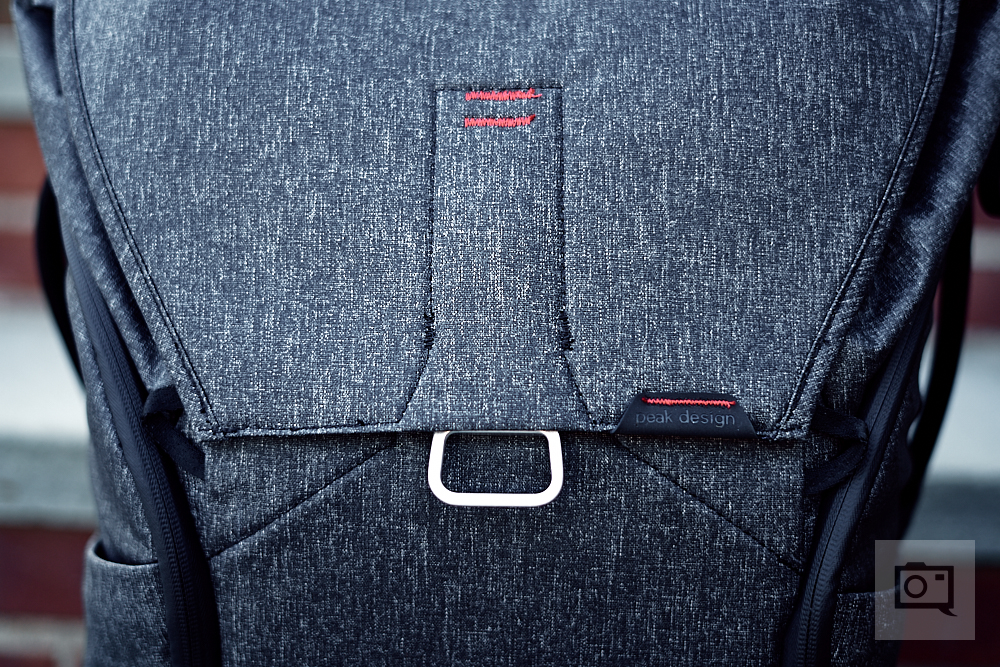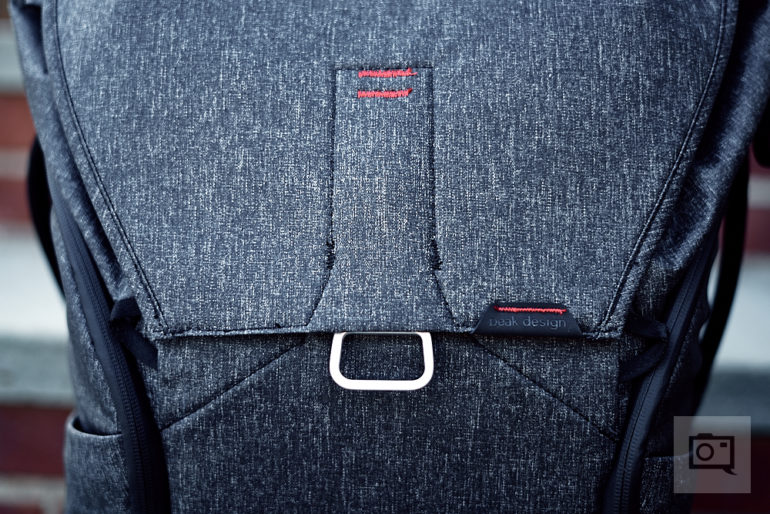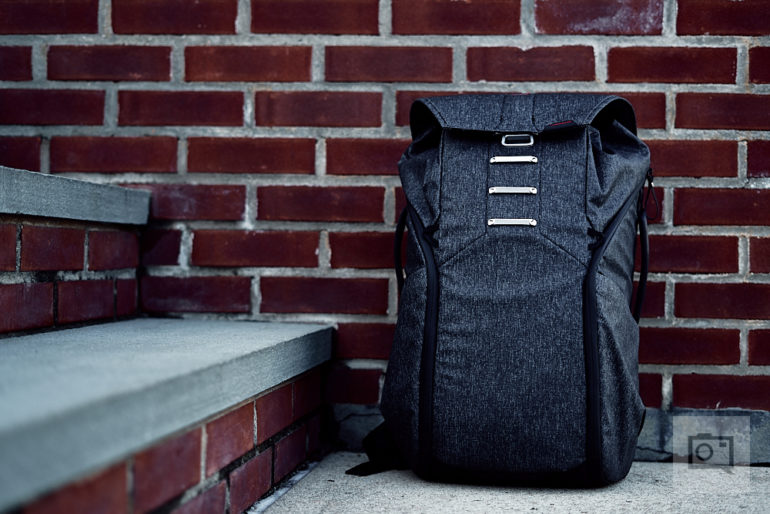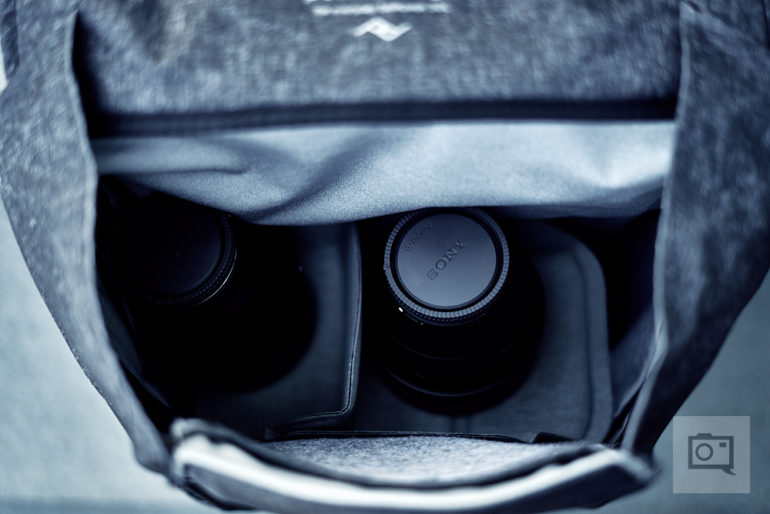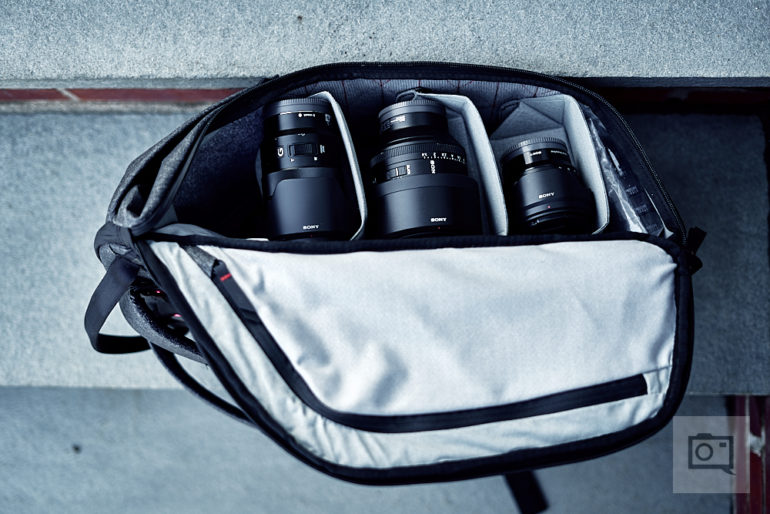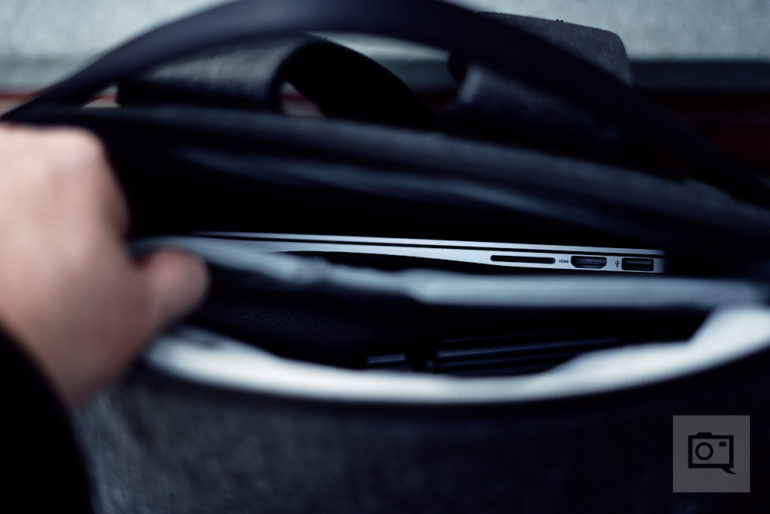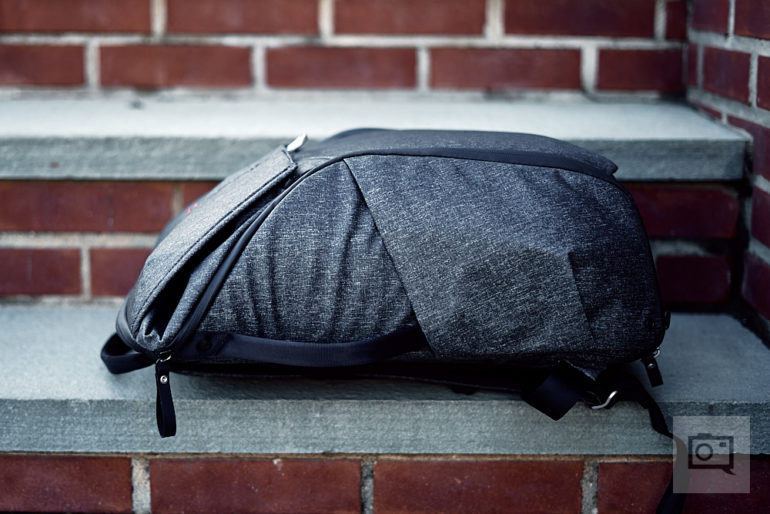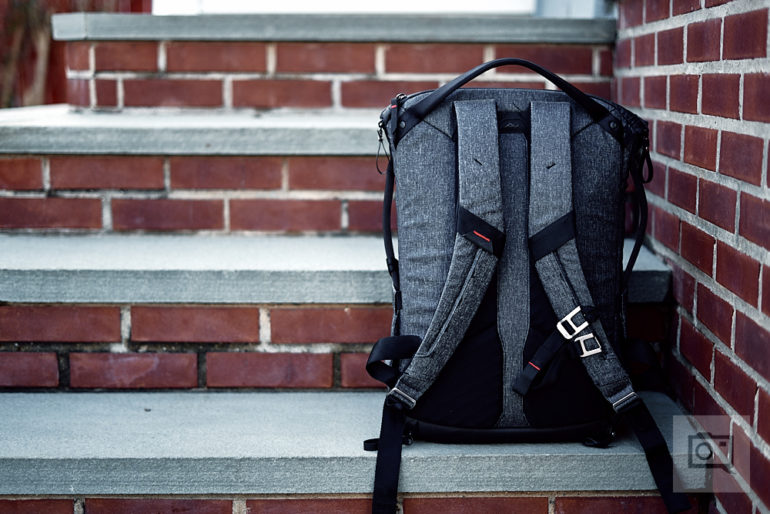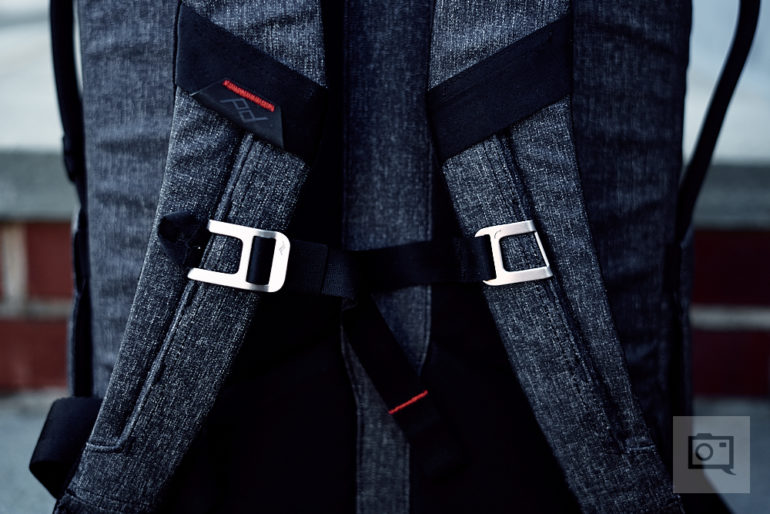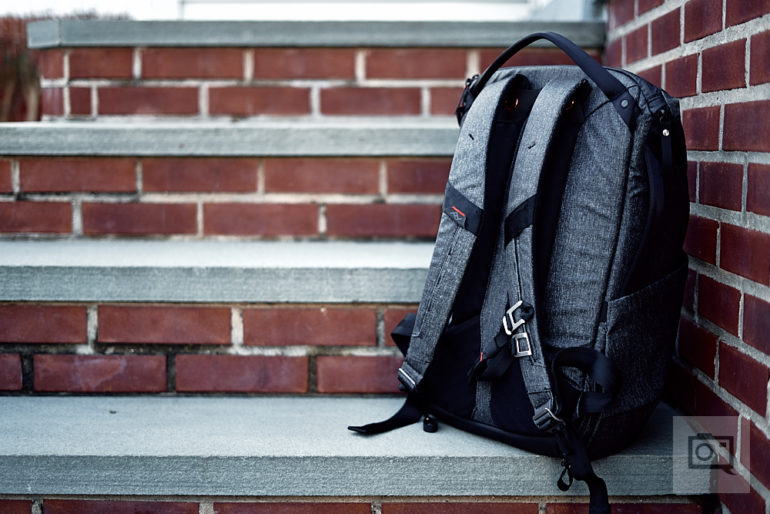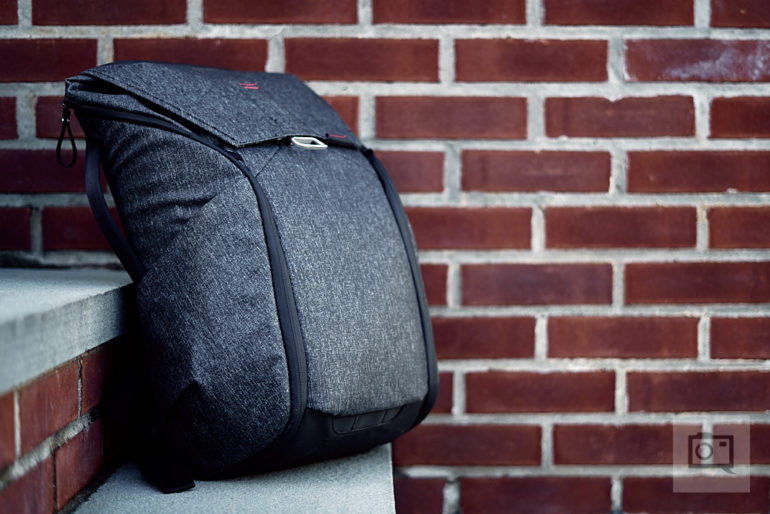Last Updated on 05/08/2018 by Mark Beckenbach
The Peak Design Everyday Backpack meets the needs of professional photographers in a minimalist package
Like most photographers, I’m always looking for “THE” perfect backpack: one that allows me to haul my entire kit with me when I’m shooting on location, travelling, or simply roaming the streets of New York City trying to capture the next decisive moment. Take it from someone who has used over a dozen different camera backpacks over the years, the Peak Design Everyday Backpack is as close to perfection as I’ve found. Is there room for improvement? Certainly. But until the inevitable 2.0 revision is released, the Peak Design Everyday Backpack is THE do it all, carry everything, go everywhere backpack to beat, and it’s certainly the best camera backpack I’ve had the pleasure of using.
The review unit Peak Design sent to us is the 30L version of the Everyday Backpack in the dark grey “Charcoal” colorway. The same backpack is available in a lighter grey “Ash” colorway as well. For photographers who travel with a more compact kit, Peak Design also makes the Everyday Backpack in a smaller 20L variant, with two additional colorways on offer: Black and Tan. I’m not sure why these two additional colors are limited only to the 20L variant, but having seen the black fabric in person on the Peak Design Everyday Sling 5L (which we reviewed back in January), I’d love to get my hands on the 30L in the same, stealthy black fabric.
Pros and Cons
Pros
- Excellent build quality
- Very comfortable
- Weatherproof construction keeps your gear dry during inclement weather
- Large side openings and pivoting shoulder straps allow for easy transition from back to front
- Main compartment can expand to hold loads of gear, or compacted down when traveling light
- Flex-Fold dividers allow for infinite customization when organizing the main compartment
- Easily fits in overhead compartments or under seats for photographers who fly often
Cons
- Smaller lenses may shift around the bag if the Flex-Fold dividers aren’t configured properly
Gear Used
We tested the Peak Design Everyday Backpack 30 L with the Sony A7RII, a handful of lenses, 13” MacBook Pro, FlashPoint XPLOR 600 Monolight, Manfrotto Nanopole, etc. Short of some larger light modifiers, C-stands, and sandbags, we were able to fit pretty much all of the gear we’d need on a photoshoot within the backpack.
Tech Specs
SKU/Part Number
BB-30-BL-1 (Charcoal)
Weight
1542g (3.4 lbs.)
Capacity
18 L min to 30 L max
Dimensions
20” H x 13” W x 7.75” D (51cm H x 33cm W x 20 D cm)
Unpacked dimensions, actual size will expand/contract depending on load
Laptop Compartment
16″ x 10.75″ x 1.5″ (40cm x 27cm x 4cm)
Designed to carry up to a 15” MacBook Pro or a 15” Surface Book 2
Tablet Compartment
14″ x 9″ x 0.4″ (33cm x 23cm x 1cm)
Designed to carry up to a 12.9” iPad Pro
Ergonomics
One of the first things you’ll notice when looking at the Peak Design Everyday Backpack is the clean, minimalist profile. The same understated design language from the Everyday Messenger is carried over here, with subtle Peak Design branding stamped or etched onto Hypalon touchpoints and anodized aluminum hardware throughout the backpack in place of obnoxiously large logos commonly found on competing products. This is certainly a boon for people who don’t want to walk around town looking like a billboard or advertise the fact that they’re hauling around thousands of dollars’ worth of camera gear. But most photographers will immediately recognize the backpack thanks to its unique profile and dark grey fabric that’s become a Peak Design staple.
Like the Everyday Messenger that came before it, the Peak Design Everyday Backpack features the same patented MagLatch mechanism on the top access flap. You can access the contents of the main compartment one handed via the top access flap easily by pulling the MagLatch loop down and away from the backpack. Closing the flap is as easy as folding the flap back over the opening to the main compartment. This maneuver becomes second nature pretty quickly, especially if you’ve used the Everyday Messenger in the past, and you’ll be able to do this without looking. The top access flap has held its shape pretty well so far thanks to the built-in foam layer. Unless you’ve stuffed the main compartment to the brim, the MagLatch will usually latch itself automatically onto one of the four anodized aluminum anchor bars when closing. While I wouldn’t make a habit of attaching the MagLatch to the top most anchor bar, you can definitely get away with it in a pinch if you find yourself with some excess baggage in need of hauling. Just make sure you’re not doing this in the pouring rain, as the top access flap won’t quite cover the entire top opening, leaving the overflowing contents of your backpack susceptible to the elements. There is a magnetically sealed slip pocket on the inside of the main compartment, directly behind where the anodized aluminum anchor bars are mounted on the exterior, perfectly sized to fit your wallet, passport, and small notepads or paperwork.
The main compartment of the Peak Design Everyday Backpack is positively massive, and the included 3 Flex-Fold dividers allow you to configure the main compartment to suit your specific needs. I don’t have to tell you how annoying it is to have to dig through a camera bag to find the lens you want only to have it sink all the way to the bottom while walking around town. The Flex-Fold dividers effectively separate the Everyday Backpack’s main compartment into shelves upon which you can organize your camera bodies and lenses, so you know exactly where all your gear is. Some of my lenses did shift around the main compartment slightly when I first began testing the Everyday Backpack, mostly because these lenses, particularly the vintage ones that I’ve adapted to Sony E-mount, are quite compact. Everything stayed put once I took some time to tailor the dividers to fit my specific kit, even when I went for some impromptu jogs with the Everyday Backpack on my back when running late to catch the subway. I’ve managed to fit my Sony A7RII, four prime lenses, and a FlashPoint XPLOR 600 Monolight securely in the main compartment with room to spare, and this was with the Everyday Backpack at its most compact configuration. I could easily fit a second pro camera body with a telephoto lens attached, or a DJI Mavic Pro/Mavic Air along with their respective controllers inside the Everyday Backpack by rearranging the Flex-Fold dividers and expanding the main compartment via the top access flap.
You can access your gear stored on the lower “shelves” of the main compartment easily via the openings on each side of the Peak Design Everyday Backpack. Simply take off one of the shoulder straps, loosen the tension on the opposing strap, and swing the Everyday Backpack from your back to your front (more on this shortly). The side openings are covered by large flaps that run the entirety of the left and right sides of the Everyday Backpack, accessible via the weatherproof zippers that feature top and bottom opening zipper pulls, letting you to open the side flaps from either direction. These zipper pulls feature integrated security loops, allowing you to fasten the zipper pulls to the anchor loops around the backpack to keep your gear safe from prying hands. Attached to each side flap are well-balanced carry handles, and an expanding exterior pocket large enough to fit a large bottle of water, an umbrella, a tripod, or even a portable light stand. One of the exterior side pockets also comes attached with a Peak Design anchor, giving you easy access to your keys by keeping them tethered to your Everyday Backpack using one of Peak Design’s ubiquitous anchor links. On the inside of each side flap are integrated elastic pockets for battery banks, cables, camera batteries, chargers, memory card holders, multitools, pens, portable hard drives, and any other small items you may want to bring with you.
Situated between the top access flap and the top carrying handle is a weatherproof zipper that runs the width of the Everyday Backpack, within which you will find the dedicated laptop & tablet compartments along with a top storage pocket. This standalone laptop & tablet compartment allows you go through airport security without having to rummage through the main compartment of the backpack where your photograph kit is stored. The laptop compartment can accommodate up to a 15” MacBook Pro or a 15” Surface Book 2, while the tablet compartment can accommodate up to a 12.0” iPad Pro. The top storage pocket is large enough for you to toss in your earbuds, phone, laptop and tablet chargers, and even your favorite pair of sunglasses with room to spare.
External carry straps (four in total) can be found neatly tucked away inside the side flap pockets, as well as the exterior bottom pocket at the front face of the Peak Design Everyday Backpack. These straps can be attached to anchor loops located around the exterior of the backpack (eight in total), allowing you to configure the straps to keep tripods, light stands, boom arms, or even sleeping bags or large coats securely attached to the exterior of the Everyday Backpack.
The back of the Everyday Backpack features corrugated EVA foam to help ventilate your back while wearing the bag for an extended period of time. The EVA foam pads also serve as a luggage passthrough, allowing you to slip the Everyday Backpack over the pull handles of your suitcase when travelling, giving your shoulders and back a much-needed break during long trips. This is a welcome addition that I wished the Everyday Messenger included. As I’d mentioned earlier, the Everyday Backpack’s shoulder straps make accessing the side openings of the backpack effortless. Like the sling strap on the Everyday Messenger, the shoulder straps on the Peak Design Everyday Backpack are attached via anodized aluminum axial connectors, allowing the straps to rotate easily and adapt to a variety of body types comfortably. I can confidently say this is one of the most comfortable backpacks I’ve ever used, even when only wearing it using a single strap. Combined with the integrated quick pulls on each shoulder strap, users are able to quickly transition between wearing the Everyday Backpack on their backs to accessing camera bodies, lenses, or whatever else they happen to have inside their backpack via the backpack’s two side openings. The included sternum strap helps keep the Everyday Backpack from shifting around on your back by evenly distributing the weight of the backpack between both shoulder straps, while preventing the straps from sliding around your shoulders or digging into your armpits. For extra support, the Peak Design Everyday Backpack also includes a waist strap that’s normally tucked away inside the exterior side pockets when not in use. I’ve never found myself needing the waist strap during my review of the Peak Design Everyday Backpack, but your mileage may vary.
Build Quality
I’m not one to abuse my equipment, but I also don’t baby my gear either. Any equipment that I keep in my everyday kit has to stand up to the rigors of professional use without me having to worry about it falling apart, allowing me to focus on the task at hand: photographing my subjects. Throughout my testing, the Peak Design Everyday Backpack held up incredibly well to the day to day abuses of getting around New York City, being crammed into overflowing subways, tossed around inside the trunks of cars with C-stands, light modifiers, jumper cables, and tire irons. The Everyday Backpack even survived some particularly nasty weather thanks to a tempestuously harsh New York winter filled with torrential downpours and numerous snow storms. I’m happy to report that both the Everyday Backpack, along with the camera gear being transported within, all survived without incident. Like the rest of the bags in Peak Design’s ever expanding stable, the Everyday Backpack is made from weatherproof 400D nylon canvas that’s been DWR (durable water repellent) treated, and all exterior zippers are weatherproof.
Ease of Use
The Peak Design Everyday Backpack is without a doubt one of the most comfortable camera backpacks I’ve ever had the pleasure of using. I can access everything stored within the main compartment easily without ever having to take the Everyday Backpack off my back thanks to how effortlessly the pivoting shoulder straps sling forward from my back. The dedicated laptop and tablet compartment make going through airport security a breeze, and I can slip the Everyday Backpack over the carry handle of my luggage if I ever need to give my shoulders a break. The Everyday Backpack will even stay upright on its own when I eventually remove it from my back once I get to where I’m going, something that the Everyday Messenger sometimes failed to do.
Conclusions
While the search for “THE” perfect camera backpack may never truly be over, the Peak Design Everyday Backpack certainly comes pretty damn close thanks to its top notch build quality, adaptability, and usability. The Everyday Backpack stands up to the daily abuses working photographers face living in an urban environment with ease, while holding its own when traveling or being caught in inclement weather without breaking a sweat. Since I began this real-world review of the Peak Design Everyday Backpack, it has consistently been my top pick whenever fellow photographers have solicited me for camera backpack recommendations. The only deciding factor is whether you’ll need the larger 30L or the more compact 20L, and which colorway suits your fancy. There may be more stylish camera backpacks on the market but beauty is in the eye of the beholder, and I value function over form every day of the week when it comes to professional gear.
We give the Peak Design Everyday Backpack five out of five stars, earning it The Phoblographer’s Editor’s Choice award.


